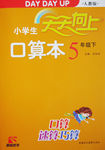题目内容
【题目】No matter what you say, I shall________my opinion.
A.carry out
B.keep up
C.go on
D.stick to
【答案】D
【解析】stick to one's opinion“坚持某人的观点”。keep up“维持某种状态”;carry out“执行”;go on with sth. “继续做某事”。

练习册系列答案
 天天向上口算本系列答案
天天向上口算本系列答案
相关题目
题目内容
【题目】No matter what you say, I shall________my opinion.
A.carry out
B.keep up
C.go on
D.stick to
【答案】D
【解析】stick to one's opinion“坚持某人的观点”。keep up“维持某种状态”;carry out“执行”;go on with sth. “继续做某事”。

 天天向上口算本系列答案
天天向上口算本系列答案